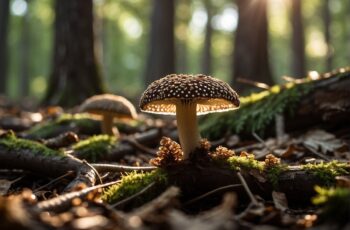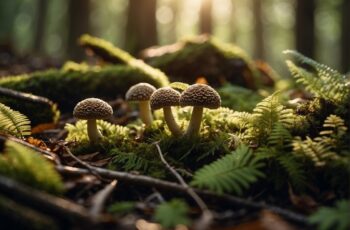Venturing into the woods can offer more than just fresh air and a beautiful array of flora and fauna—it can also provide a bounty of edible wild mushrooms. Foraging for these natural delicacies is a rewarding experience that connects you with the environment and can add unique flavors to your meals. Knowing which mushrooms are safe to eat is crucial, as the line between a delicious meal and a dangerous mistake can be thin.
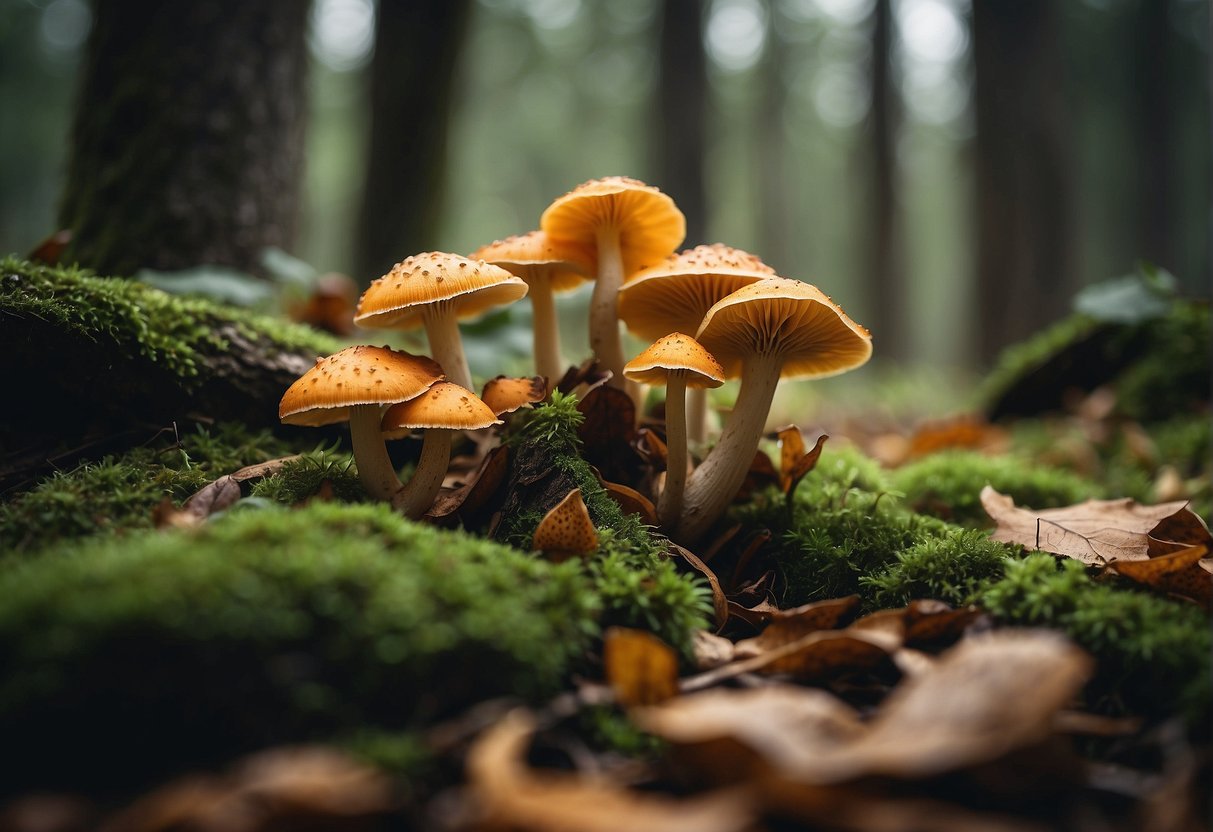
While foraging, you’ll encounter a variety of mushrooms, each with distinctive characteristics. Learning to identify edible species such as morels, chanterelles, and porcini is part of the fun. With proper identification, a successful foray into the forest can yield mushrooms that are not just safe but also nutritious, offering a range of health benefits. Always approach mushroom foraging with caution, respect for wildlife regulations, and an understanding of the role these fungi play in their ecosystem.
Key Takeaways
- Foraging connects you with nature and can yield delicious, nutritious mushrooms.
- Accurate identification is vital for safe mushroom consumption.
- Approach mushroom foraging with caution and respect for the ecosystem.
Identifying Edible Wild Mushrooms
Venturing into the woods in search of edible wild mushrooms can be rewarding, but it requires knowledge and caution. Recognize that proper identification is crucial for your safety, because while some mushrooms are a delightful addition to a meal, others can be deadly.
Mushroom Foraging Basics
When you begin foraging, always go with an experienced guide. Familiarize yourself with the local laws and regulations for foraging, as some areas may be protected or have limits on wild harvesting. Be respectful of the environment by taking care not to damage the habitat or take more than you need.
Key Features for Identification
Caps, gills, and stems are vital features in determining whether a mushroom is edible.
- Caps: Observe their shape, color, and any unique patterns.
- Gills: Located beneath the cap, their color and attachment to the stem help with identification.
- Stems: Check the length, thickness, and presence of a ring or volva.
Be particularly wary of the Amanita family—many are poisonous and often have white gills and a volva at the base of their stem. If you’re ever unsure, consider this rule of thumb: when in doubt, throw it out.
Mushroom Identification Tools
A mushroom field guide is an indispensable tool for you, the forager. Look for a guide with clear illustrations or photographs, like How to Identify Edible Wild Mushrooms: A Beginner’s Guide, which can help you compare what you find with safe-to-eat species. A spore print, while more advanced, can also be a significant identification tool and is highly recommended by mycologists. Additionally, various smartphone apps developed by mushroom experts can provide supplementary information, though they should never completely replace a physical guide or expert opinion.
Common Edible Mushrooms
Exploring the outdoors provides you with the opportunity to encounter a range of edible mushrooms. These fungal treasures can add flavors and textures to your meals that are as varied as their habitats.
Morels and Their Varieties
You can identify morels by their distinctive honeycomb-like appearance on their caps. These mushrooms come in different varieties, such as the Common morel and Yellow morel. They’re highly sought after and thrive in woodland areas, particularly in the spring after rain. Morels must be cooked before consumption.
The Versatile Chanterelles
Chanterelle mushrooms stand out with their vibrant yellow-orange color and their trumpet-like shape. They’re known for a fruity aroma, peppery taste, and firm texture. Chanterelles like to grow in mossy, damp forests and are versatile in cooking, suitable for everything from sautéing to soups.
Oyster Mushrooms and Their Habitat
Oyster mushrooms are easily recognized by their oyster-shaped cap and grow in layered clusters mainly on dead hardwood trees. They possess a mild flavor and a velvety texture that becomes more flavorful when cooked. Look for these edible delights in shaded areas where they may flourish on the side of trees.
Puffballs: Nature’s Delight
Puffballs are part of the “foolproof four” mushrooms, nearly unmistakable with their round, ball-like shape. They range from small Gem-studded Puffballs to large Giant puffball mushrooms, and must be eaten when the flesh is white and firm. Ensure you cut them open to check for the proper stage of development before consuming.
Other Notable Edibles
Other notable edible wild mushrooms to look out for are the Hen of the woods (Maitake mushroom), Lion’s mane mushroom, and Hedgehog mushroom (Sweet tooth). These species are also a delight for foragers; the maitake grows at the base of trees, lion’s mane is notable for its unique tooth-like spines, and hedgehog mushrooms are identifiable by their distinctive underside of spines rather than gills. These mushrooms are not only delicious but also provide a variety of textures and flavors for your culinary adventures.
Safety Precautions and Ethical Foraging
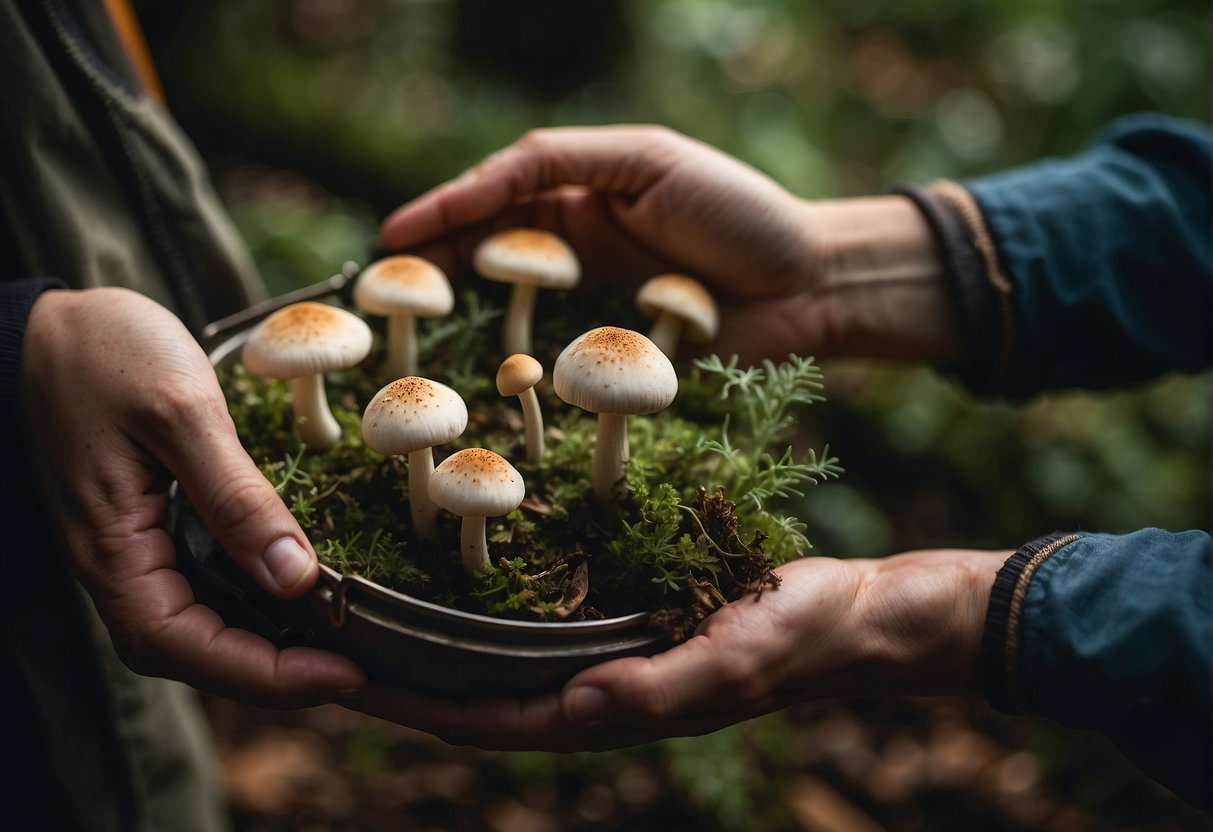
Embarking on a mushroom foraging journey brings with it the thrill of discovery and the joys of nature. Yet, safety and ethical considerations are paramount to ensure that you and the forest ecosystem remain unharmed.
Avoiding Poisonous Mushrooms
To avoid the significant risks of poisonous mushrooms, thorough knowledge is your best defense. Especially dangerous are false morels and the notorious Amanita phalloides, commonly known as the death cap. Often confused with edible varieties, these toxic mushrooms can be fatal. Always cross-reference mushrooms with reliable field guides and never consume any mushroom unless you’re 100% certain of its identity.
- Confirm identity: Double-check features like spore prints, gill attachments, and cap shapes.
- Photographic evidence: Take a photo and compare it to trusted sources or consult an expert.
- Educate your eyes: Amanita phalloides has a distinct white or pale green cap and gills, and a volva (cup-like structure) at its base.
Responsible Foraging Practices
Your safety is not the only consideration; responsible foraging practices protect both you and the environment. Adhere to local regulations to ensure that foraging is ethical and legal in your area. On the forest floor, be mindful of your impact on the diverse and fragile ecosystem.
- Check legality: Verify laws and obtain any necessary permits or permissions.
- Leave no trace: Tread lightly and avoid disrupting native flora and wildlife.
- Respect private property: Secure permission if foraging in privately owned areas.
Guidelines for Sustainable Harvesting
Sustainable harvesting is essential to preserving the climate and bounties of nature for future foragers. It involves taking only what you need and allowing the mushroom species to regenerate.
- Avoid picking young, immature specimens.
- Cut mushrooms at the stem rather than pulling them out to preserve the mycelium.
- Limit your harvest: Take a portion of what you find, typically no more than 1/3, to ensure continued growth and biodiversity.
Keep in mind that each foraging trip is a chance to be a steward of nature. With these practices, you can enjoy the bounty of the wild while ensuring it remains abundant for years to come.
Mushrooms in the Ecosystem
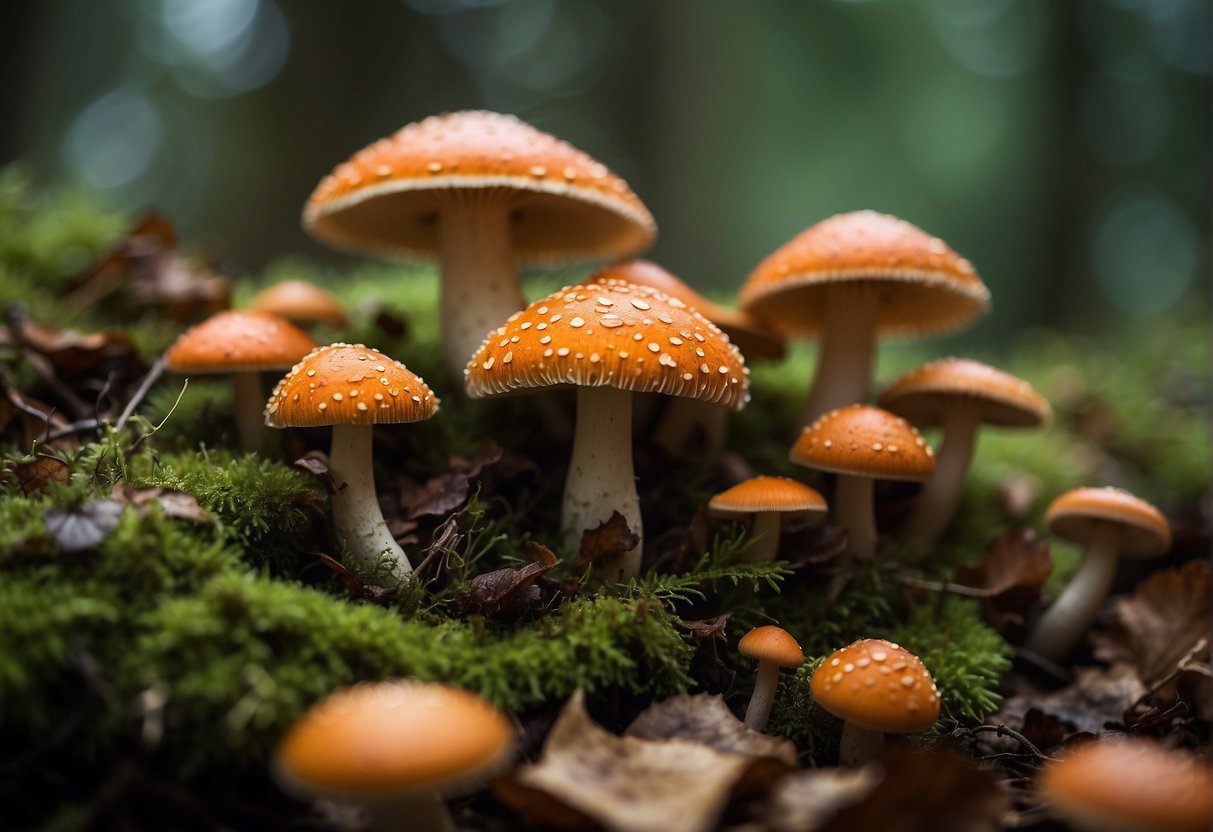
As you traverse the woods, it’s important to recognize that the mushrooms you forage are deeply rooted in—and critically important to—their ecosystem.
The Role of Fungi in Forests
Fungi serve as ecological linchpins in forested areas, decomposing organic matter and recycling nutrients back into the soil. This transformative process nurtures the forest floor, fostering a fertile ground for plant growth and stability within the woods. The mycelium—the underground network of fungal threads—acts like a biological web, interlinking trees and plants in a symbiotic relationship that’s crucial for the ecosystem’s health.
Interactions with Wildlife
Wildlife often depends on fungi, not just as a food source but also as an integral part of the habitat. Some species of mushrooms provide sustenance for a variety of forest creatures, from insects to mammals. These interactions contribute to seed dispersal and pollination, ensuring the forest’s continuous regeneration. Additionally, various mushrooms can serve as warning signals for wildlife, as certain types indicate either healthy or contaminated environments.
Effect of Climate on Mushroom Growth
Mushroom growth is inextricably linked to climate conditions. Optimal temperature and moisture levels are essential for the fruiting of many edible varieties. Variations in climate, particularly erratic weather patterns and temperature shifts, can influence fungi fruiting times and abundance. As you monitor the growth of mushrooms, you’ll find that the right combination of warmth and rainfall catalyzes the emergence of fruiting bodies, enabling you to harvest nature’s bounty.
By understanding mushrooms’ role in the ecosystem, you can better appreciate their presence beneath the forest canopy and the delicate balance they help maintain.

